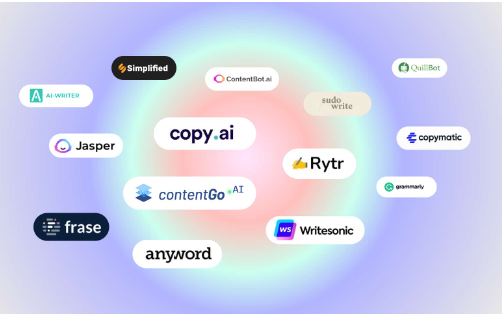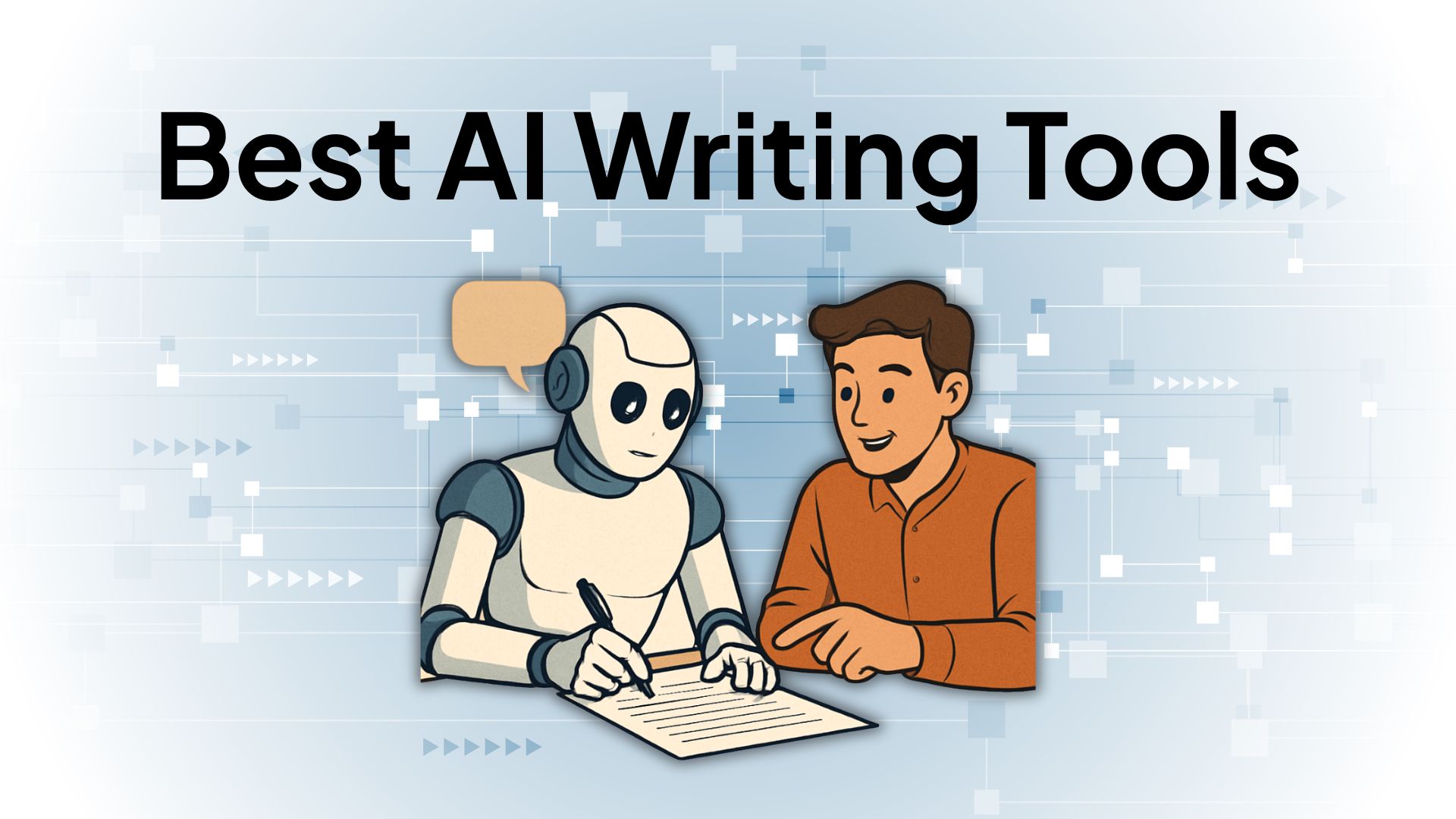Introduction
The Era of Writer’s Block is Over
Writer’s block has long haunted professionals across industries—from marketers and journalists to bloggers and business owners. The anxiety of staring at a blank page with no direction has been a common yet frustrating part of the creative process. Today, however, artificial intelligence (AI) is transforming that experience, turning a once painful moment into an opportunity. With AI content generation tools stepping into the scene, creators now have access to technology that can offer inspiration, generate drafts, and even develop full-length content within minutes. It’s not just a technological shift—it’s a creative revolution.
Rise of Artificial Intelligence in Content Creation
AI has quietly made its way into many areas of modern life, but in the realm of content creation, it’s having a particularly disruptive impact. From generating blog posts to drafting email campaigns and even writing poetry, AI tools are now capable of producing human-like content that resonates with target audiences. These developments are made possible by advances in machine learning and natural language processing, enabling AI to understand context, intent, and even tone. This rise of AI is not about replacing writers, but enhancing their ability to work faster, smarter, and more creatively.

Understanding AI Content Generation
What is AI Content Generation?
AI content generation refers to the use of machine learning algorithms to automatically produce written, spoken, or visual content. It leverages pre-trained language models that have consumed vast datasets of human-created text to learn language patterns, grammar, and context. These models, such as GPT (Generative Pre-trained Transformer), can then generate new content that mimics human writing. Whether it’s creating a blog post, composing a tweet, or scripting a video, AI provides a foundational structure upon which human creativity can flourish.
History and Evolution of AI in Writing Tools
The evolution of AI writing tools began with basic spellcheckers and grammar assistants. As technology matured, it moved into predictive text and auto-correct. Today, advanced language models like OpenAI’s GPT-4 and beyond have taken this evolution to an entirely new level. These tools no longer merely assist—they actively generate content, adapt tone, and understand complex instructions. Over the past five years, we’ve witnessed a shift from support tools to fully interactive co-writers capable of generating publish-ready content.
Types of AI Content Generators (Text, Visual, Audio)
AI content generation isn’t limited to text. There are now tools capable of producing high-quality images (like DALL·E), audio (voiceovers, music composition), and even video content. For example, text-based tools generate articles, social media captions, and code. Visual content tools design infographics or artwork, while audio-based AI systems can produce podcasts or translate speech. This multi-modal generation signifies a new era of creativity where AI becomes a versatile partner across various content formats.

Key Technologies Behind AI Writing Tools
Natural Language Processing (NLP)
At the heart of AI content generation is Natural Language Processing (NLP), a branch of AI focused on enabling machines to understand and interpret human language. NLP allows AI to break down sentences, analyze syntax, and grasp the semantics behind words. This enables tools to generate content that isn’t just grammatically correct, but also contextually meaningful. NLP is what allows AI to determine whether a user is requesting a formal tone for a white paper or a conversational tone for a blog post.
Machine Learning and Deep Learning
Machine Learning (ML) and Deep Learning (DL) power the decision-making and learning capabilities of AI tools. Through training on vast datasets, AI models learn patterns, trends, and contextual clues that help them generate realistic content. Deep learning models use artificial neural networks that mimic the way human brains process language and information. This helps the AI “learn” over time, improving its accuracy and creativity with use. It’s this foundational tech that has made AI-generated content more readable and engaging.
GPT Models and Transformers Explained
The GPT (Generative Pre-trained Transformer) models are the engine behind many modern AI writing tools. These models are trained on massive datasets to understand language structure, context, and relationships between words. Transformers, the architecture upon which GPT is built, use attention mechanisms to analyze entire sequences of text at once, rather than one word at a time. This allows them to maintain coherence in longer texts, a critical component in generating blog posts, scripts, and essays that flow naturally from beginning to end.

Benefits of Using AI for Content Creation
Enhanced Productivity and Speed
One of the most significant benefits of AI in content creation is the dramatic boost in productivity. Instead of spending hours brainstorming, outlining, and drafting, writers can now use AI to generate outlines, suggest topics, or even produce a first draft. This means quicker turnaround times for blog posts, reports, and other written materials—especially useful for marketers operating under tight deadlines.
Overcoming Creative Blocks
AI is particularly effective in breaking through creative blocks. When writers hit a wall, AI can propose new directions, tone changes, or even write a few introductory paragraphs to get the creative juices flowing. The collaborative nature of working with AI means creators no longer face blank pages alone—it’s like having a virtual writing partner that’s always available to help.
Scalability for Content Marketing
For businesses looking to scale their content marketing efforts, AI provides an efficient and cost-effective solution. Instead of hiring multiple writers, companies can rely on AI tools to generate bulk content across various platforms. This scalability ensures that businesses can maintain an active online presence, publish frequently, and engage audiences consistently.
Cost Efficiency for Businesses
Hiring professional writers, editors, and content strategists can be expensive. While human talent is invaluable, AI offers a budget-friendly alternative for generating drafts or simple content. This is particularly beneficial for startups or small businesses with limited resources. With AI, they can maintain a content strategy without sacrificing quality or burning through budgets.
Common Use Cases for AI-Generated Content
Blogging and SEO Copywriting
AI has become a valuable tool for blogging and SEO. From keyword-rich content to optimized headings and meta descriptions, AI can handle a variety of tasks that contribute to better search engine performance. Tools like ChatGPT and Jasper AI are commonly used by marketers to brainstorm topics, write SEO-friendly articles, and adapt content for different personas or platforms.
Social Media Posts and Ads
Short-form content like social media captions and advertisements are perfectly suited for AI generation. These platforms thrive on timely, relevant content—something AI excels at producing rapidly. AI can create catchy hooks, effective call-to-actions, and campaign variations, saving marketers both time and effort in content creation.
Email Marketing Campaigns
AI tools can draft entire email sequences based on specific campaign goals or audience segments. From welcome emails and product launches to newsletters and promotions, AI ensures that every message remains on-brand and personalized. This level of automation is especially useful for e-commerce and SaaS businesses looking to maintain consistent engagement.
Scriptwriting for Videos and Podcasts
AI is also used in scripting video content and podcasts. With tools that understand tone, pacing, and structure, AI can assist in writing engaging scripts that keep audiences interested. This is particularly useful for YouTubers, podcasters, and online educators looking to streamline their content creation process.

Best AI Content Writing Tools in 2025
ChatGPT by OpenAI
ChatGPT remains one of the most widely used and powerful AI writing tools. It excels in understanding complex instructions, maintaining conversational tone, and generating high-quality content. With the latest updates, it supports image prompts, multilingual content, and integrates smoothly with third-party applications.
Jasper AI
Jasper AI is known for its user-friendly interface and marketing-focused templates. It offers specific modules for blog writing, ad copy, landing pages, and more. Jasper is often favored by digital marketers for its brand voice memory feature, which helps maintain consistency across all content types.
Copy.ai
Copy.ai focuses on short-form content generation such as headlines, social media captions, and email subject lines. It’s an excellent tool for those who need quick, punchy content without spending hours on ideation. Its ease of use and variety of templates make it a go-to for startups and freelancers.
Writesonic and Other Rising Tools
Writesonic has made waves by offering a balance between affordability and performance. Its features cater to both short- and long-form content creation. Other rising tools like Rytr, Frase, and Scalenut are also gaining traction due to their SEO integration and multilingual capabilities.
How to Effectively Collaborate with AI Writers
Human-in-the-Loop Strategy
AI writing tools are most effective when used in collaboration with human editors. The human-in-the-loop strategy ensures that while the AI handles the heavy lifting of generating drafts and ideas, human writers refine the content, add creativity, and align it with brand voice. This synergy leverages the best of both worlds—AI’s speed and the human touch of insight, empathy, and storytelling. Rather than viewing AI as a competitor, it’s more productive to consider it a co-author that accelerates output without diminishing quality.
Prompt Engineering Tips
Getting the most out of AI requires learning how to give it the right instructions—a process known as prompt engineering. Clear, specific prompts lead to better results. For example, instead of asking “Write an article about coffee,” a more effective prompt would be, “Write a 500-word article in a conversational tone explaining the health benefits of drinking black coffee.” Adjusting tone, audience, and length within the prompt allows users to generate highly targeted content.
Editing and Personalization Techniques
Even the best AI content needs polishing. Editing ensures the information is accurate, the tone matches the brand, and the piece feels authentic. Personalization—adding anecdotes, localized references, or cultural nuances—further elevates the content. Human intervention is key to ensuring the final product meets editorial standards and connects with readers on a deeper level.

Challenges and Limitations
Risk of Plagiarism and Repetitiveness
Although AI tools generate original content based on statistical models rather than copying from sources, they may inadvertently reproduce phrases or ideas commonly found online. This can lead to unintentional plagiarism or overly generic content. It’s crucial to use plagiarism checkers and inject unique perspectives into AI-generated drafts to maintain originality and avoid SEO penalties.
Lack of Emotional Nuance
AI can simulate tone and sentiment, but it lacks the true emotional intelligence that comes from lived experience. It may struggle with humor, irony, or emotionally charged subjects. This can lead to content that feels hollow or robotic. For emotionally resonant topics—such as personal stories, mental health, or human rights—it’s essential to rely heavily on human editing to preserve authenticity and empathy.
Ethical Considerations in AI Writing
The ethical implications of AI-generated content are still being debated. Key concerns include transparency (should audiences know if content was AI-assisted?), misuse (generating fake news or misinformation), and labor impact (the threat to professional writers). Ethical content creation involves disclosing AI usage when relevant, avoiding deceptive practices, and supporting responsible AI development.
SEO Optimization with AI Content
How AI Tools Handle Keyword Integration
Modern AI writing platforms are capable of integrating keywords naturally into content without compromising readability. Some tools even allow users to input focus keywords, ensuring the AI prioritizes their inclusion in headings, subheadings, and meta descriptions. This helps content rank better while maintaining a smooth, reader-friendly flow.
Structuring Articles for Search Engines
AI is adept at generating structured content that aligns with SEO best practices, including proper use of H1/H2 tags, bullet points, and concise summaries. This structure not only improves crawlability for search engines but also enhances user experience. With the right inputs, AI can generate entire pillar pages and topic clusters for advanced SEO strategies.
Maintaining Natural Language While Boosting SEO
One of the strengths of AI content tools is their ability to balance keyword usage with natural language. This is essential to avoid keyword stuffing, which search engines penalize. By weaving keywords seamlessly into meaningful sentences, AI helps maintain a conversational tone while optimizing content for search visibility.
AI Content Detection and Quality Assurance
Tools to Detect AI-Generated Text
As AI content becomes more widespread, so does the need for detection tools. Platforms like Originality.ai and GPTZero can identify AI-written content, which is important for publishers, educators, and businesses that need to verify authenticity. These tools analyze patterns in sentence construction and complexity to flag potential AI generation.
Balancing AI Output with Human Editing
To maintain high-quality standards, AI-generated content must be reviewed and refined by humans. Editors should fact-check, correct grammar nuances, improve transitions, and ensure the tone aligns with the brand’s voice. A balanced approach ensures that the final output doesn’t just read well—it also resonates and performs.
Ensuring Originality and Engagement
True engagement comes from content that is both informative and relatable. While AI can assist with drafting and research, originality stems from the human creator’s experience and voice. Adding personal anecdotes, unique case studies, or provocative questions can elevate AI content to make it more compelling and memorable.
AI and the Future of Content Marketing
Predictive Content Strategies
AI is not only used to generate content but also to predict what kind of content will perform best. By analyzing search trends, user behavior, and competitor strategies, AI tools can recommend topics, content formats, and publishing schedules tailored for maximum engagement and ROI.
AI-Driven Personalization at Scale
One of AI’s most promising applications is its ability to personalize content at scale. Whether it’s email campaigns, website copy, or product recommendations, AI can tailor messaging based on user data. This level of customization was previously impossible without massive resources, but AI makes it accessible for businesses of all sizes.
Autonomous Content Scheduling and Distribution
Content automation tools are increasingly integrated with AI to schedule, distribute, and even optimize posts across platforms. This means content calendars can be managed autonomously, ensuring timely posting, audience targeting, and performance tracking without manual oversight.
Real-World Case Studies
Successful AI-Driven Blog Campaigns
Many brands have successfully adopted AI in their content strategies. For instance, e-commerce businesses have used AI to automate product descriptions and blog content, resulting in increased traffic and conversions. Companies like HubSpot and Shopify have integrated AI tools to streamline content operations and publish at scale.
How Startups and Enterprises Benefit from AI Writing
Startups use AI to level the playing field, producing high-quality content with limited resources. Enterprises, on the other hand, use AI to scale global content strategies, localizing language and tone across markets. From automating press releases to drafting technical documentation, AI’s versatility makes it invaluable across industries.
Metrics and ROI Improvements
Organizations using AI report significant ROI improvements—from increased publishing frequency and reduced content creation costs to better SEO performance and engagement rates. Metrics such as bounce rate, time on page, and keyword ranking often improve when AI-generated content is paired with solid editorial oversight.
Legal and Ethical Considerations
Copyright Issues
AI-generated content raises questions about ownership. Who owns the content—the user or the developer of the AI? Most platforms allow users to claim full rights, but laws vary globally. It’s vital to understand the terms of service and stay updated on emerging legal frameworks around AI authorship.
Transparency and Disclosure Requirements
In industries like journalism, education, and finance, transparency is key. Disclosing the use of AI in content creation helps maintain trust and credibility. It’s also becoming a legal requirement in some jurisdictions, with potential regulations on the horizon to enforce full disclosure of AI-generated content.
Responsible AI Use Guidelines
Ethical AI usage involves more than avoiding plagiarism or misinformation. It includes respecting user data, ensuring inclusivity in language, and avoiding biased or harmful content. Organizations must develop responsible AI usage policies that guide their teams in maintaining integrity and fairness in content practices.
The Human Touch: Why Writers Still Matter
Creativity, Emotion, and Critical Thinking
AI can mimic human writing, but it cannot replicate the lived experience, emotional intelligence, or critical thinking that writers bring to the table. Content that tells stories, evokes emotions, or challenges perspectives remains firmly in the human domain. These elements are what make content truly engaging and impactful.
AI as an Assistant, Not a Replacement
Rather than replacing writers, AI should be seen as an assistant that enhances productivity and creativity. It can handle the grunt work—outlining, summarizing, optimizing—so that human creators can focus on strategy, storytelling, and originality. The most powerful content today is created through a partnership between human insight and machine efficiency.
Hybrid Writing Models
The future belongs to hybrid writing models that blend AI automation with human creativity. This model allows for faster content production without sacrificing quality or authenticity. Writers who embrace AI as a tool, not a threat, will find themselves at the forefront of this new creative frontier.
Final Thoughts
Embracing AI Without Losing Authenticity
AI content generation is not a fad—it’s a fundamental shift in how we create and consume information. By learning to work with these tools responsibly and creatively, writers and marketers can achieve more while maintaining their unique voice. The goal is not to surrender to automation, but to use it as a catalyst for better, more impactful content.
Preparing for the Future of Writing
As AI continues to evolve, so will the skills required to master it. Writers must stay informed, adaptable, and open to experimentation. Embracing AI means becoming more strategic, more efficient, and ultimately more effective. With the right balance of technology and humanity, we can say goodbye to blank pages—and hello to endless possibilities.

